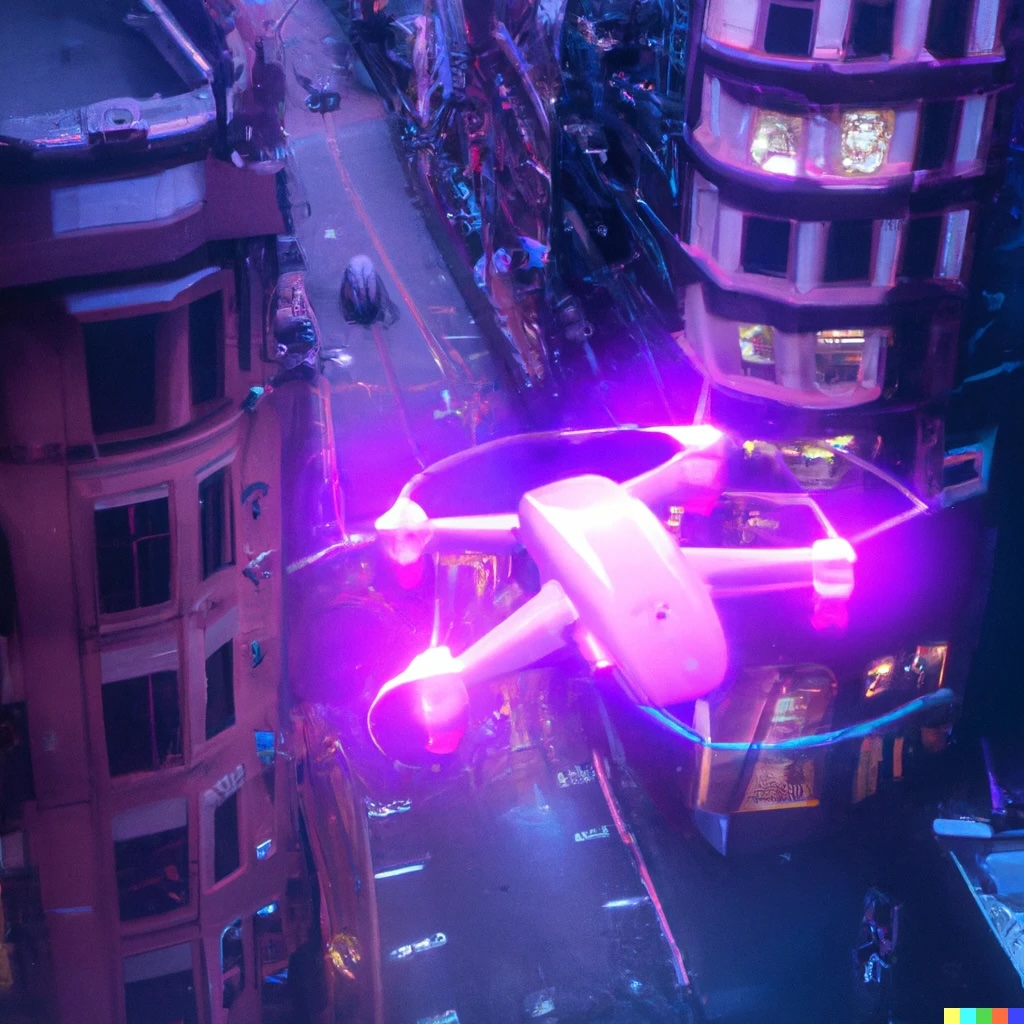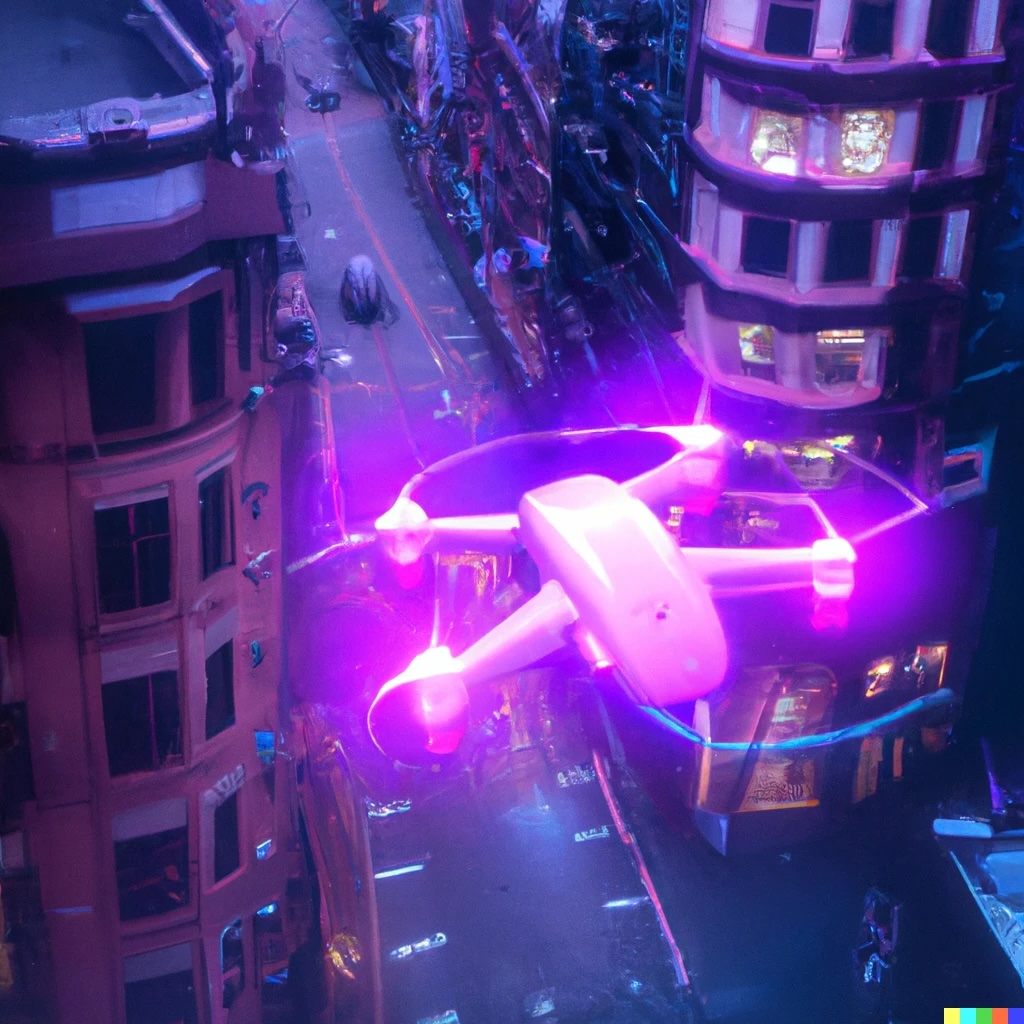By Ingrid Furtado – Published March 21, 2024
Look up and what do you see? Birds, planes? Or a symphony of sleek, futuristic drones crisscrossing the blue canvas above our heads? Is the hum of propellers the new melody of the firmaments?

Defense Drone Strategies
While this futuristic panorama may not be our current reality, the escalating demand for commercial and aerial defense applications raises the intriguing prospect – could this be a plausible glimpse into our skies in the near future? The answer seems promising, contingent upon the pace at which governments implement plans to revolutionize transportation infrastructure.
The skies are no longer just the limit, but the canvas upon which the future of defense and retail is being painted with unprecedented precision and vision. In a paradigm-shifting endeavor, governments and commercial industries are already reimagining the role of drones within their defense and selling strategies in a sagacity that goes beyond reconnaissance, surveillance, or marketing approaches.
With a basket full of tools that include cutting-edge technology, artificial intelligence, and strategic innovation, in this re-imagined world, drones would mark an era of unmanned defense and delivery capabilities where they compete not only with each other in the skies but also engage in a dynamic rivalry with ground-based road traffic.
This conceptualization reflects a possible world where the traditional boundaries between airborne and terrestrial transportation are blurred, signalling a new era of technological convergence and competition not just in the commercial realm but also in aerial space defense.
Defense
A recent report published by the UK Ministry of Defence (link), shows that uncrewed systems in conflicts are not new; however, in contemporary conflicts uncrewed systems are being used for a wider range of tasks than ever before, freeing up humans from being physically injured in a warfare scenario.
The U.K. Ministry of Defence recently announced the delivery of more than 10,000 drones for the Ukrainian Armed Forces, “which include supporting logistic, surveillance, strike and maritime uncrewed platforms”, the report says. But much of the future of drones in the aerial space is merely scratching the surface, as the report reinforces “the use of uncrewed systems is not only here to stay but is likely to increase as technology expands opportunities for their employment.”
Flying Taxis
In addition, this week the U.K. Department of Transport also published an ambitious report (link) that aims to get eVTOLs (electric vertical take-off and landing aircraft) working as flying taxis, similar to what helicopters do, before the end of this decade.
On the sidelines of SXSW in Austin, Texas, Julie Garland, founder and CEO at Avtrain, one of Europe’s leading drone training and consultancy. “Drones are tools and their use cases rely on what we define as 3D’s: the dull, the dirty, the dangerous”, said Garland, an Irish aviator authority (IAA) Authorised Examiner for all drones up to 165 pounds (75 kilos).

She explained the ‘dull’ category involves repetitive tasks demanding precision, such as surveillance, where a combination of AI and drones can streamline the process. ‘Dirty’ pertains to situations like air quality testing or chemical assessments, typically in unknown or hazardous environments. The ‘dangerous’ aspect encompasses various scenarios, including military operations, known risks, and tasks at elevated heights.
Her organization certifies drone pilots and operators for all fixed-wing, hybrid, single and multi-rotor drones in all weight categories under the European Union Aviation Safety Agency (EASA).
Standards
In the USA, according to the Federal Aviation Administration (FAA), all drones must be registered, with the exception of those weighing up to 0.55 pounds (less than 250 grams) flown under the Exception for Limited Recreational Operations. In essence, if you own one of these small drones, you can fly it for work or business purposes by adhering to the Part 107 guidelines (link).
However, despite progress, the drone industry still grapples with nascent standardization and regulatory frameworks that continue to evolve. In the defense or homeland security, the lack of standardization also remains. Similarly, within the realms of defense and homeland security, the absence of standardized protocols persists.
“In defense, I don’t think we ever had formal standards. I believe each country will develop its standards, based on its security risks. With that said, it is unlikely we will see a common defense policy or defense standards under the military perspective,” said Julie Garland, adding that the morals and ethics behind how drones are used should also be an important topic of discussion.
In that regard, Dan Sloat, a prior US Air Force Captain and currently a private pilot and drone pilot has his perspective on policies as well. “As of now, drones must follow a maximum operational altitude of 400 feet above the ground (close to 122 meters)” said Dan who is also the founder and president of the Advanced Air Mobility Institute, a non-profit international research center.

Dystopian & Public View
In the realm of public perception, the dystopian side of drones casts a shadow over the skies, instilling fear and apprehension. Drone surveillance, once hailed for its potential to enhance security, now can evoke concerns of privacy invasion and constant monitoring. Hackers exploit vulnerabilities in drone systems, breaching cybersecurity measures and gaining access to sensitive information. Border smuggling operations utilize drones to bypass traditional security measures, facilitating the illicit transportation of contraband.
People may experience the chilling reality of being stalked by drones, their every move monitored and recorded without their consent. Furthermore, concerns persist regarding biases in AI technology, which have the potential to disproportionately harm marginalized communities.
Dan Sloat believes key stakeholders should leverage the broad view of futurists: to do the necessary leg work to build out the needed policies, practices, laws, and regulations to mitigate and avoid the harm that drone technology can trigger.
“We genuinely believe drones can bring a lot of good to the world, but we also should be spending enough time to think through, and set the right mindset to understand the capabilities that might be abused and misused” said the expert.
Foresight Lenses
Mike Jackson, the founder of PreEmpt.life, contends that a lack of preparedness can instil fear and impede growth.
“Thinking about drones, swarming in our skies, offers excitement, challenge, and achievement in solving many of today’s impossible tasks, like beating traffic jams, delivering to inaccessible places, and saving lives. But, just like lack of preparedness for GPTs, fear, uncertainty, and doubt, will rise without early consideration of the need for low altitude drone control, nefarious uses, and unexpected accidents” said Jackson.
Jackson who is also a professional futurist believes that charting the nuanced terrain of drone implications is crucial and foresight is here to assist in navigating that.
“A fine balance needs to be achieved that has the public, governments, and businesses approval or the risk of a major backlash may occur” Jackson reinforced.
And you? What is your image of the Future of Drones? Please, don’t hesitate to write in the comments below!
Alexis is the AI driving *PreEmpt’s foresight services. See below for a hint of some insights about the future of drones and also the full link of the PreEmpt report:
Alexis Generated Ideas for the Defense Drone market:
- Adopt a symbiocene long-term vision that aligns with human security, technology, and the ecosystem. (1 Year)
- Create a hybrid organizational design combining Empowered, Distributed Team Topologies, and Resource Efficiency models to drive efficient strategy execution. (1-2 Years)
- Initiate rigorous research in AI and biotech applications toward developing cutting-edge defense drone technology (1-3 Years)
- Develop universally accepted ethical guidelines for AI and drone technology applications in the defense sector. (2-3 Years)
- Democratize the design and decision-making process involving all stakeholders, reinforcing collective responsibility and acceptance. (2-3 Years)
- Foster sectoral consensus on the implementation of uncrewed defense drone strategy, reducing friction and promoting cooperation. (2-5 Years)
- Incorporate ‘Eco-Defence’ principles integrating environmental kinesis with defense strategy execution (3-5 Years)
- Promote techno-cultural design principles and cradle-to-cradle design in defense drones, countering environmental degradation (4-6 Years)
- Encourage a shift from anthropocentrism to symbiocentrism to harmonize human intelligence, technological capabilities, and bio-cultural diversity. (4-7 Years)
- Stimulate collaboration with international partners to harmonize regulations and exchange best practices. (5-7 Years)
You also can access for free, PreEmpt’s full ‘Defence Drone Strategies – UK’, in the link below:
https://www.preempt.life/report/public_view.html?synthesisId=p5g6d1kuk7
*About PreEmpt
PreEmpt.life helps people, teams, and organizations to Reimagine Tomorrow.
- PreEmpt combines collective human and artificial intelligence to develop agile and robust strategies that empower you to cut through uncertainty.
- If you want to know more about PreEmpt or have questions on what topics or reports you need, please, click here or reach out to PreEmpt’s team here.
- Foresight PreEmpt reports start at $190.

Re-imagined Drones: Navigating the Future with Wings of Tomorrow
About the Author


Great article.
Super first blog. Well done, Ingrid